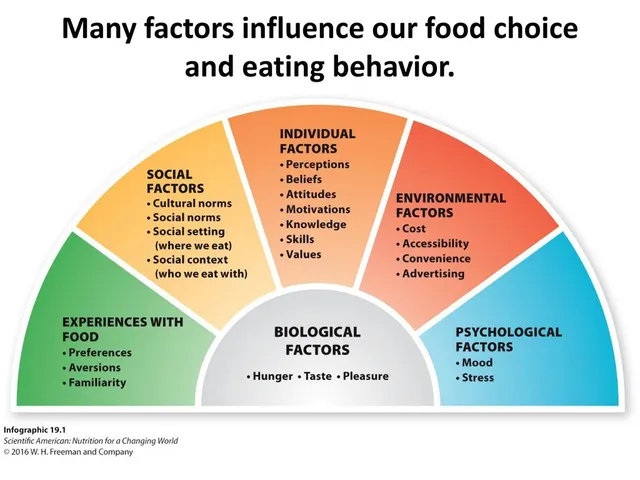What Exactly Is a Supermodel?
You’ve seen them on billboards, magazine covers, and Instagram feeds-glamorous, taller-than-average, impossibly poised. But what makes someone a supermodel and not just another model? It’s not just about looking good in a dress. A supermodel is someone who transcends the runway, becomes a cultural symbol, and commands attention beyond fashion shows. They’re the faces that sell everything from perfume to luxury cars, and their names are known even by people who don’t care about fashion.
In the 1980s and 90s, the term exploded into the public consciousness. Names like Naomi Campbell, Cindy Crawford, Linda Evangelista, and Claudia Schiffer weren’t just models-they were global stars. They earned millions per campaign, appeared on talk shows, and had their own TV specials. Today, the bar is higher. Supermodels aren’t just beautiful; they’re businesspeople, influencers, and sometimes even designers or entrepreneurs.
How Did Supermodels Become the Face of Fashion’s Elite?
Fashion didn’t always revolve around individual faces. Back in the 1950s and 60s, models were anonymous. They wore the clothes, smiled politely, and disappeared after the shoot. That changed with Twiggy in the 60s and then dramatically in the 80s, when designers realized that a recognizable face could sell more than a collection.
It wasn’t just about looks-it was about personality. Linda Evangelista famously said, “We don’t wake up for less than $10,000 a day.” That quote wasn’t just bold-it was a declaration. Supermodels weren’t just hired; they were negotiated for. Brands started bidding wars. Magazines fought to put them on covers. Suddenly, a model’s face had more value than a runway show.
By the 1990s, the supermodel era peaked. The “Big Five”-Crawford, Campbell, Evangelista, Christy Turlington, and Naomi Campbell-were everywhere. They were on the same magazine cover together in Vogue’s iconic 1990 issue. That cover didn’t just sell copies-it defined a generation. These women weren’t just models. They were the first fashion influencers, long before Instagram existed.
Who Are the Modern Supermodels?
The supermodel title didn’t die-it evolved. Today’s elite aren’t just runway queens; they’re multi-platform powerhouses. Gigi Hadid, Bella Hadid, Kendall Jenner, and Adut Akech aren’t just walking for Chanel or Victoria’s Secret. They have their own beauty lines, design collections, and millions of social media followers.
Take Kendall Jenner. She’s not just a model. She’s a brand. She partnered with SKIMS, a shapewear line founded by Kim Kardashian, and became a major shareholder. Her name alone drives sales. Gigi Hadid has walked for Chanel, Versace, and Tommy Hilfiger, but she also has her own fragrance line and a deal with Maybelline that pays her seven figures.
And then there’s Adut Akech, a South Sudanese-Australian model who rose from refugee status to walking for Chanel and Saint Laurent. Her story isn’t just inspiring-it’s reshaping what a supermodel looks like. The industry is no longer just about one narrow standard of beauty. Diversity, authenticity, and personal brand matter more than ever.
What Makes a Supermodel Different From a Regular Model?
Not every high-fashion model is a supermodel. The difference isn’t just pay or exposure-it’s influence. A regular model might book 10 shows a season and appear in a few editorials. A supermodel books global campaigns, fronts major advertising pushes, and becomes a household name.
Here’s the breakdown:
- Regular model: Works for agencies, books jobs through casting calls, earns $500-$5,000 per job, rarely appears outside fashion media.
- Supermodel: Has direct deals with brands, earns $100,000-$1M+ per campaign, appears on TV, in magazines, and on social media as a personality.
Supermodels don’t wait for calls-they make them. They have teams: managers, lawyers, publicists. They negotiate contracts, approve creative direction, and sometimes even co-design collections. They’re not just wearing clothes-they’re shaping them.
The Business Behind the Beauty
Being a supermodel isn’t just about posing. It’s about building a business. Most top models today don’t rely on agencies alone. They create their own companies, invest in startups, and license their names.
Naomi Campbell launched her own modeling agency, NCM, and has invested in fashion tech startups. Tyra Banks turned her name into a media empire-she created America’s Next Top Model, launched her own beauty brand, and became a producer. Even after stepping away from the runway, her brand still generates revenue.
These women didn’t just get lucky. They studied the industry, understood contracts, and learned how to turn their image into long-term assets. Many of them now mentor younger models-not just to give back, but to build the next generation of brand power.
How the Industry Has Changed Since the 90s
The 90s supermodel era was fueled by print media-magazines, billboards, TV commercials. Today, it’s all digital. A supermodel’s Instagram following can be worth more than a magazine cover.
When a model posts a photo wearing a new dress, the brand gets instant exposure. That’s why brands now pay models directly for social media posts-sometimes more than they pay for runway appearances. A single Instagram post from a top model can generate millions in sales.
But it’s also more competitive. There are thousands of models on Instagram with 500K followers. What sets the elite apart? Consistency, authenticity, and control. The top models don’t just post-they tell stories. They show behind-the-scenes moments, advocate for causes, and share their struggles. That’s what builds loyalty.
What It Really Takes to Make It
Let’s be real: becoming a supermodel isn’t just about being tall and pretty. It’s about resilience. The industry is brutal. Rejection is constant. You might fly across the world for a casting, only to be told you’re “not right for the look.”
Supermodels don’t just have beauty-they have grit. They learn to handle criticism, manage their mental health, and stay grounded amid chaos. Many speak openly about eating disorders, body shaming, and the pressure to look perfect. That vulnerability is part of their power now.
Today’s top models are also more educated. Many have degrees or are studying business. They understand contracts, taxes, and intellectual property. They know their worth-and they fight for it.
Supermodels vs. Influencers: Where’s the Line?
Is there still a difference between a supermodel and a social media influencer? Yes-but it’s getting blurry.
Influencers build audiences through relatability. Supermodels build authority through exclusivity. An influencer might post a selfie in a $50 dress. A supermodel wears a $50,000 gown on the Met Gala red carpet and gets paid to do it.
But the best of both worlds? Look at Bella Hadid. She’s walked for Dior and Balenciaga, but she also has 40 million Instagram followers. She doesn’t just sell clothes-she sells a lifestyle. That’s the new supermodel: part runway icon, part digital entrepreneur.
What’s Next for the Fashion Elite?
The future of supermodels isn’t about who looks the most perfect-it’s about who has the most impact. The next generation includes models who are activists, artists, and changemakers.
Look at Imaan Hammam, who uses her platform to speak about Middle Eastern representation. Or Paloma Elsesser, who redefined beauty standards as a plus-size model walking for major luxury houses. These women aren’t just models-they’re shifting the entire definition of fashion.
And the brands are listening. More designers are casting models based on character, not just measurements. Sustainability, diversity, and authenticity are now non-negotiable. The supermodel of tomorrow won’t just be beautiful. She’ll be bold, smart, and unapologetically herself.
Final Thoughts: Why Supermodels Still Matter
Some say the age of the supermodel is over. That’s not true. It’s just changed. The glamour is still there-but now it’s layered with substance. Supermodels today aren’t just faces. They’re voices. They’re leaders. They’re the ones pushing fashion to be more inclusive, more honest, and more powerful than ever before.
If you think they’re just pretty people in fancy clothes, you’re missing the point. These women built empires on their own terms. And that’s something worth paying attention to.
Are supermodels still relevant today?
Yes, but their role has evolved. Today’s supermodels aren’t just runway icons-they’re business leaders, influencers, and cultural figures. They launch brands, advocate for causes, and command multi-million-dollar deals. Their influence goes far beyond fashion shows.
How much do supermodels earn?
Top supermodels earn between $100,000 and $1 million per campaign, with some making over $10 million annually from contracts, endorsements, and their own product lines. Gigi Hadid, Kendall Jenner, and Naomi Campbell have all earned seven-figure deals with major brands.
What’s the difference between a model and a supermodel?
A model typically works on a job-by-job basis for agencies and earns modest fees. A supermodel has global brand recognition, signs exclusive contracts, earns high-profile fees, and often builds personal brands outside modeling-like beauty lines, TV shows, or fashion labels.
Can anyone become a supermodel?
It’s not just about looks. While physical traits matter, today’s supermodels succeed because of their work ethic, business sense, and ability to connect with audiences. Many have degrees, manage their own teams, and use social media strategically. Talent alone isn’t enough-you need strategy and resilience.
Who are the most powerful supermodels today?
Kendall Jenner, Gigi Hadid, Adut Akech, and Bella Hadid dominate the scene. But influence is also growing among models like Paloma Elsesser and Imaan Hammam, who are reshaping beauty standards and bringing diversity to the forefront of high fashion.



